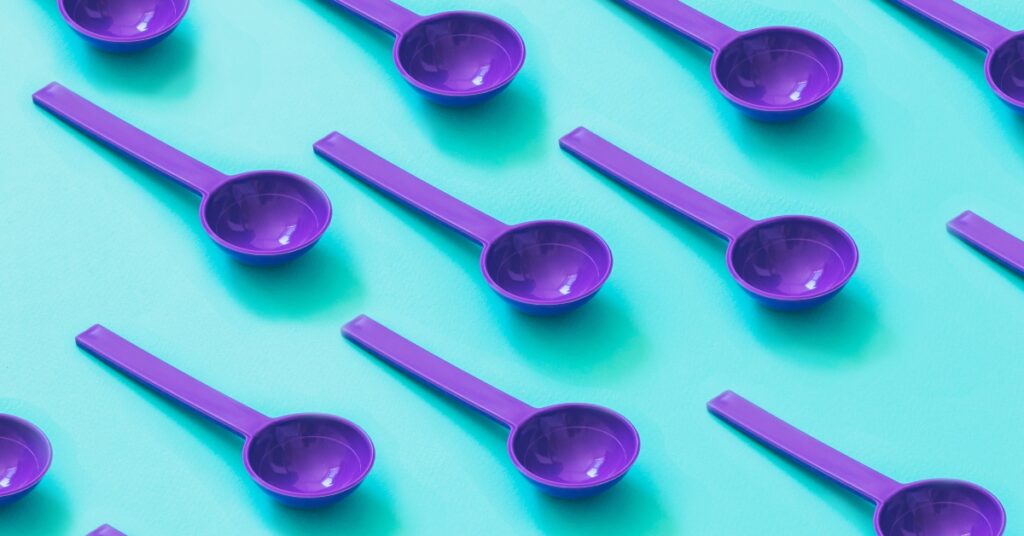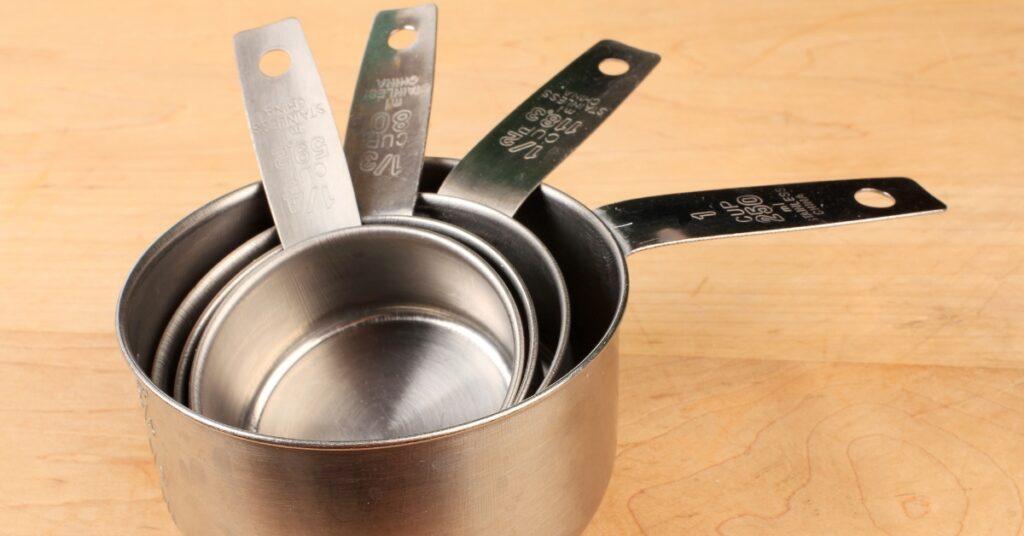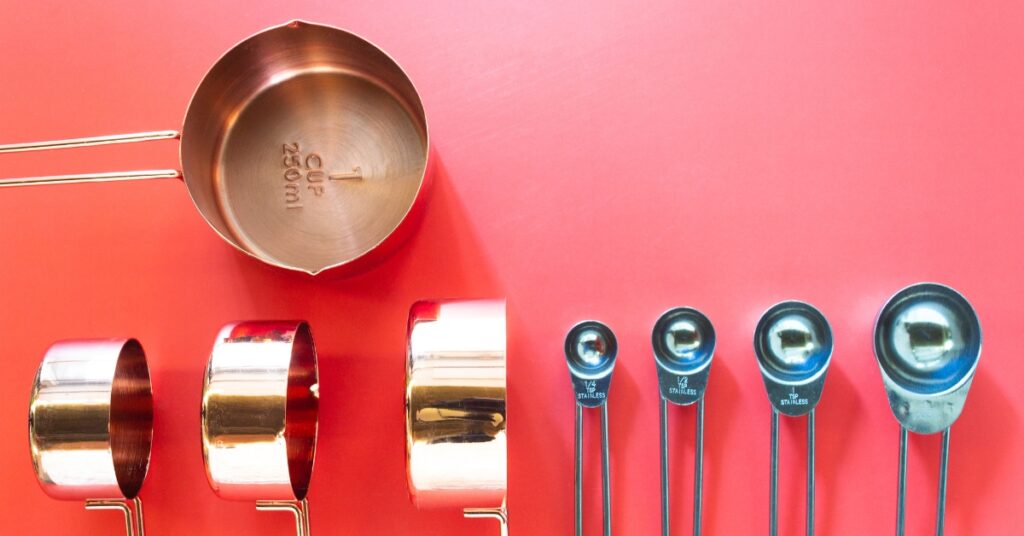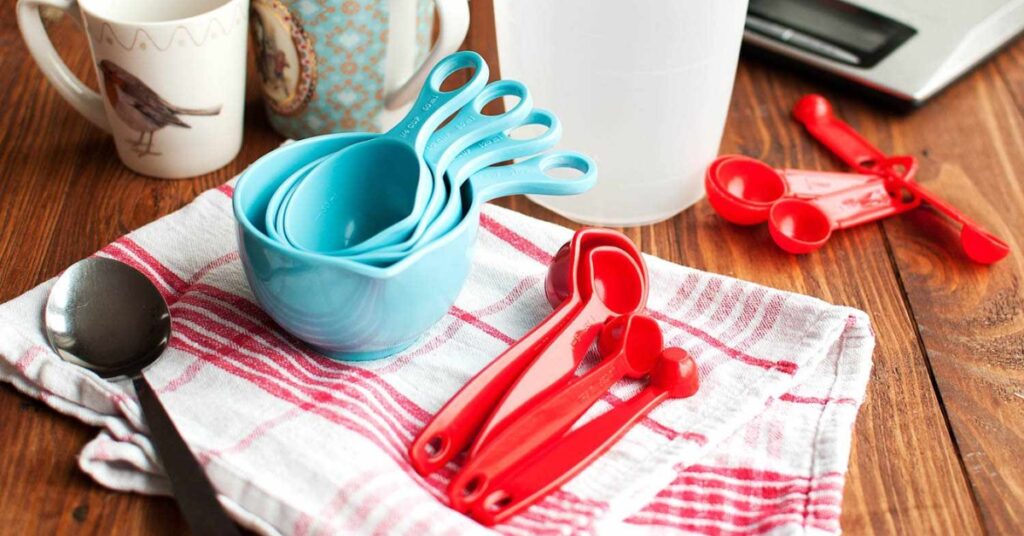In this article, we will show you how to use measuring spoons and cups to ensure your ingredients are measured accurately, which is crucial for the success of any recipe. Accurate measurements can make the difference between a dish that is just okay and one that is outstanding.

What Spoons and Cups Are Used for Measuring?

1. Measuring Spoons
Measuring spoons are commonly used to measure spices used in seasoning. They are ideal for measuring dry ingredients such as salt, sugar, or pepper, for example. You can use it to measure liquid ingredients such as soy sauce, vinegar, or oyster sauce. Additionally, measuring spoons can be used for baking powder, baking soda, and small amounts of ingredients for baking recipes.
2. Measuring Cups
Measuring cups are suitable for measuring larger amounts of ingredients such as water, milk, or gravy. It is also good for measuring flour when making bread and pizza. Beyond this, measuring cups are used for measuring grains, pasta, and even chopped vegetables or fruits in larger quantities. Some recipes might also require measuring cups for liquid ingredients like oil or broth.

Types of Measuring Spoons

Measuring spoons come in different sizes, each corresponding to a specific quantity:
• Tablespoon: 15 ml (14 cm³)
• Teaspoon: 5 ml (11.6 cm³)
• 0.5 Teaspoon: 2.5 ml (11.3 cm³)
• 1/4 Teaspoon: 1.25 ml (11 cm³)
How to Measure Accurately Using Measuring Spoons?


How to Measure Dry Ingredients:
• When measuring dry ingredients like salt, sugar, or spices with measuring spoons, dip the spoon into the dry ingredient and level it with a leveling tool. This extra step ensures your measurement is accurate.
How to Measure Liquid Ingredients:
• When measuring liquid ingredients such as soy sauce, vinegar, or sake, be sure to fill the spoon so that the liquid is slightly above the level of the spoon.
Types of Measuring Cups

Measuring Cups come in different sizes, each corresponding to a specific quantity:
• 1/4 Cup 60 mL (6 cm³)
• 1/3 Cup 80 mL (8 cm³)
• 1/2 Cup 120 mL (12 cm³)
• 2/3 Cup 160 mL (6 cm³)
•3/4 Cup 180 mL (18 cm³)
• 1 Cup 240 mL (24 cm³)
How to Measure Accurately Using Measuring Cups?


For Dry Ingredients:
• When measuring dry ingredients such as flour, avoid overfilling the cup. Fill the cup with the ingredients without overfilling and ensure they are even with the gradient on the side.
For Liquid Ingredients:
• Pour the ingredients into the cup and check if they are equal to the gradient on the side of the cup. Make sure to keep your face at eye level with the cup to get an accurate measurement.
Differences and Features

Measuring Cups come in different sizes, each corresponding to a specific quantity:
Measuring Spoons:
• Sizes: Typically come in sets of 4-6 spoons ranging from 1/8 teaspoon to 1 tablespoon.
• Materials: Made from plastic, stainless steel, or silicone.
• Designs: Some have narrow ends for fitting into spice jars, while others have rounded ends for easy scooping.
• Uses: Ideal for small quantities, both dry and liquid.
Measuring Cups:
• Sizes: Usually come in sets with common sizes like 1/4 cup, 1/3 cup, 1/2 cup, and 1 cup.
• Materials: Available in plastic, glass, and stainless steel. Glass and some plastic versions are often used for liquids.
• Designs: Some have handles and spouts for easy pouring, while others are stackable for space-saving.
• Uses: Suitable for larger quantities of dry and liquid ingredients.
The Importance of Accurate Measurements
Measuring ingredients is the most important task in cooking. If the measurement is incorrect, your food will not taste great even if the recipe is excellent.

Conclusion
We hope you now know the basic skill of measuring accurately using measuring spoons or cups. Mastering this skill will improve your cooking and help you achieve better results with your recipes

